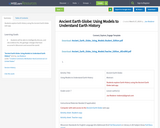
Students explore Earth History using the Ancient Earth Globe web app.
- Subject:
- Earth and Space Science
- Geology
- Material Type:
- Activity/Lab
- Date Added:
- 03/27/2019

Students explore Earth History using the Ancient Earth Globe web app.
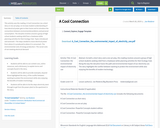
This activity uses the reading, A Cool Connection (as a short story or one act play), to increase student understanding of how electrical power gets to their home and to introduce the connections between environmental problems and personal consumption. The storyline revolves around a group of high school students seeking relief from a heatwave while planning activities for their Ecology Club.
Topics introduced and assessed:
• The steps needed to move electrical power from where it is produced to where it is consumed
• The environmental costs of energy production
• The social costs of not meeting electrical demand

This is a lesson that could also be used as an assessment for students who are learning about the Kingdoms of Life.
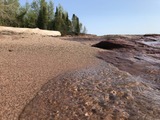
In high school, Gena and Ali set out to learn about the geophysical forces acting on Lake Superior. They wanted to investigate why they would sometimes see such dramatic fluctuations in Lake Superior water levels. They learned that large lakes exhibit a phenomenon called a seiche (pronounced saysh) and they decided to investigate how often the water switched directions and how much the water level changed because of the seiche.
This activity was evaluated using the HQIM rubric linked here https://docs.google.com/spreadsheets/d/1hZqpmXhKFV1ltE8PbdtFJzRvwcvdA-bDQ_-Kw29cci8/edit?usp=sharing
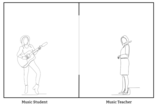
This 24x36 OpenSciEd Consensus Model is a derivitive of the original model in the OSE resources for until 6.1. We printed it on peel-and-stick vinyl and mounted it on a sheet of plastic core to make it rigid and lasting. The surface can be drawn on with dry erase markers and reused over time.

This instructional slide show mixes original OpenSciEd instructional content for unit 6.1: Light and Matter with student activities and supplemental instruction. Please make a copy to modify.

This collection combines original content from OpenSciEd Unit 7.1: Chemical Reactions and Matter and teacher-developed slides and lessons and student note templates for lessons 1 thorugh 6
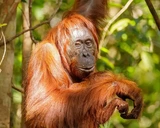
This guide to OpenSciEd unit 7.5: Ecosystem Dynamics and Biodiversity includes: Lesson pacing; and Assessment guidance. School districts that use The Teacher Clarity Playbook by Fisher and Frey Playbook will benefit from using this guide. Each lesson is labeled by a number and letter (ie: 3a) and contains the original resource three-dimensional standards as Lesson Level Performance Expectations. We have broken those PEs into student-friendly Learning Intentions and Success Criteria, which can be posted on boards or digital slides and used for assessment criteria.
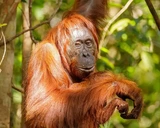
This curriculum guide contains pacing, instruction, prior knowledge, and assessment guidance to accompany the OpenSciEd unit 7.5 Ecosystem Dynamics and Biodiversity. For schools who use Fisher and Frey's The Teacher Clarity Playbook, you'll find student-friendly learning intentions and success criteria for every lesson (indicated by a number and letter, ie: 4b), drawn from the OSE three dimensional performance expectations. These can be posted on slides or boards in classrooms to make learning visible for students and help design assessment criteria.

This curriculum guide contains pacing, instruction, and assessment guidance to accompany the OpenSciEd unit 7.6 Earth Resources & Human Impact. For schools who use Fisher and Frey's The Teacher Clarity Playbook, you'll find student-friendly learning intentions and success criteria for every lesson, drawn from the OSE three dimensional performance expectations. These can be posted on slides or boards in classrooms to make learning visible for students and help design assessment criteria.

OpenSciEd Unit 8.2: Sound Waves student notebook handouts--ready to print

This set of slides has been curated and developed by Kim Lemberger at the STEM Innovation Center Einstein Project and a cohort of teachers who trained under Kim. They are intended to elaborated on the labs in the 8.4 unit of OpenSciEd.
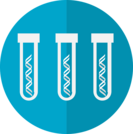
This is an interdisciplinary research project module with a 6-8 scope including NGSS (MS-LS4-5) and Common Core ELA standards (RST.6-8.1 and WHST.6-8.8) where learners explore Genetic Engineering and Gene Therapy uses and establish an evidence-based position to argue the question "Should humans harness genetic science and engineering for our benefit?"Expected sequence and timeframe for this module is approximately fifteen 60-minute periods in both science and ELA classrooms, which includes research time (with technology), composition of argumentative essays and Google Slides presentations. Modifications for learners with exceptionalities are not included, but are readily accommodated through modifications to quantity of supports, DOK in delivery, and interpretation of the grading rubric(s). Resources include a Google Drive link that is able to be viewed by anyone with the link. Please download the files or make a copy to your own Google Drive.

Biofuels are made from plants that are growing today, and are being considered as an alternative to fossil fuels. To become biofuels, plants need to go through a series of chemical and physical processes that transform the sugars into ethanol. Scientists are interested in seeing how yeast’s ability to transform sugar into fuel is affected by environmental conditions in fields, such as droughts.
This resource has been evaluated using the HQUIM rubric linked here. https://docs.google.com/spreadsheets/d/1y6pUBeJXq-dZLdIjWx_5rNjaj4JCttLpDm5fOt9mNsA/edit?usp=sharing